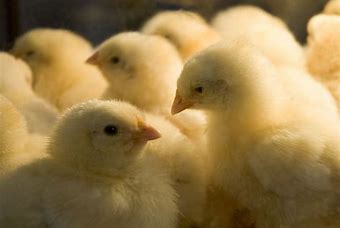

Every farmer desires 100 per cent survival of chicks once he or she has bought and put them in a brooding house. Losses will, however, almost always occur especially during the first two weeks of life. Mortality of 1-5 per cent may be considered normal, but anything above 5 per cent is abnormal and requires immediate intervention to stop further losses. Indeed some of the causes can actually wipe out the entire flock. Some of the common causes of mortality in brooding chicks include:
Genetic Factors: There are many lethal gene mutations in birds, most of which cause death during the incubation period. A few, such as congenital loco and congenital tremors will cause death of chicks within a week of hatching. To prevent this, farmers are advised to purchase day old chicks from reputable firms who select against such genes.
Management Factors: The most common errors that farmers commit include:
High brooding temperatures: These result into two major problems, namely,
Dehydration: The body of young chicks comprises of about 70 per cent water. If temperatures remain continuously high, it results in loss of water from the body leading to dehydration. A water loss of about 10 per cent will cause death due to circulatory failure.
Pasting: This is when high temperature in the brooder house causes pasting or sticking of faeces around the vent leading to blockage and ultimately death of chicks. Low brooding temperature cause chilling and pneumonia which kills chicks in high numbers. Dead chicks on post mortem show pale to blue lungs in colour. Low brooding temperature makes the chicks to huddle together to keep warm and maintain body temperature. This further leads to smothering and death. To prevent the effects of temperatures, a farmer should adjust the brooding room temperature 24 hours before putting the chicks in the brooding room and during the brooding period. A farmer should also try to maintain the normal recommended temperature throughout the brooding period and evenly in the brooding areas.
Feed related factors include
Feed poisoning such as fungal (mould) contamination or feed contaminated by toxic substances especially tannin found in saw dust and excess salt in water as well as toxic gases (Ammonia, carbon monoxide and carbon dioxide). This should be avoided through use of proper feeding and use of clean water as well as proper litter management with regular mixing and removal to avoid accumulation of toxic gases in the brooder room. Adequate ventilation in the house is also very important.
Diseases: Newly hatched chicks do not have a high immunity level. If hygiene is therefore, not maintained, a number of diseases responsible for early chick mortality will thrive. Among the most prevalent of these diseases are:-
Omphalitis: Also referred to as ‘mushy chick disease’ or ‘navel ill’, this is an infection of the navel characterised by inflamed skin in the navel area, soft, flabby and distended abdomen, pasting of the vent and foul smell on the carcass on opening due to unabsorbed yolk. Affected chicks appear depressed with drooping heads. This is a bacterial disease and can spread very fast becoming responsible for high losses in the flock of chicks.
Pullorum: This is an acute infectious and fatal bacterial disease of chicks characterised by ruffled feathers, white diarrhea, laboured breathing, chirping and death. It is also common to find dead chicks without showing any signs of disease.
Salmonellosis: This is a condition referring to a group of acute rapidly spreading diseases affecting all ages. It is characterised by rise in body temperature, septicemia (presence of infectious oroganisms in blood), omphalitis, hepatitis (inflammation of the liver), enlargement of spleen and death. When it affects young chicks, it can be responsible for a very high death rate in the brooder room.
Colibacillosis: This is a serious and acute bacterial disease affecting the blood system and can affect all ages of chicken with high prevalence and mortalities in newly hatched chicks. Strict bio- security, or hygiene is the one major method of preventing the above diseases. The houses, water and feed equipment and the entire surrounding of the brooder room must be kept clean and free from all contamination.
Other factors to be considered are:
Floor, water and feeder space must be adequate to avoid overcrowding, starvation and dampness of the litter which facilitates multiplication of pathogenic micro-organisms and further deaths.
Proper handling of chicks during vaccination and other procedures to avoid injuries which predispose chicks to contamination and subsequent infections.
Maintaining proper humidity to avoid dampness in the brooder room. Dampness facilitates accumulation of toxic gases and growth of infectious micro-organisms.
Construction of brooder houses should also be proper to keep away predators such as rats, dogs and cats.
Proper ventilation is necessary to regulate temperature and remove carbon dioxide, ammonia, other gases, moisture, dust and odour. Fresh air should be introduced uniformly, mixed well with house air, and circulated properly throughout the brooder house.
Light is an important factor during brooding because chick activity is greater in bright light intensity than in low light intensity. During brooding the light should be at the brightest intensity to encourage chick activity assisting them to locate feed and water. Once they learn where feed and water are located (around 7 to 10 days of age), the light intensity and duration can and should be reduced.
 Contact Jaguza Support
Contact Jaguza Support